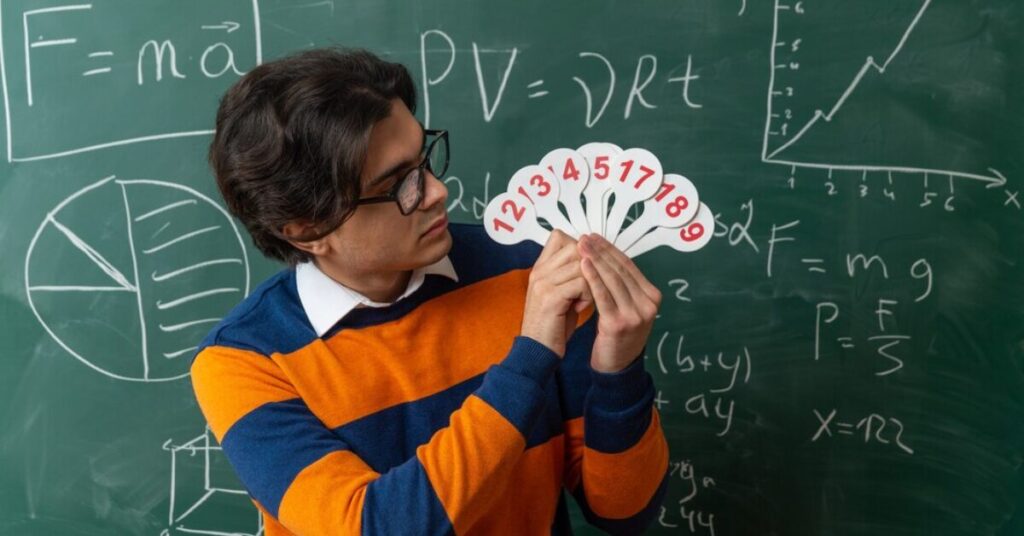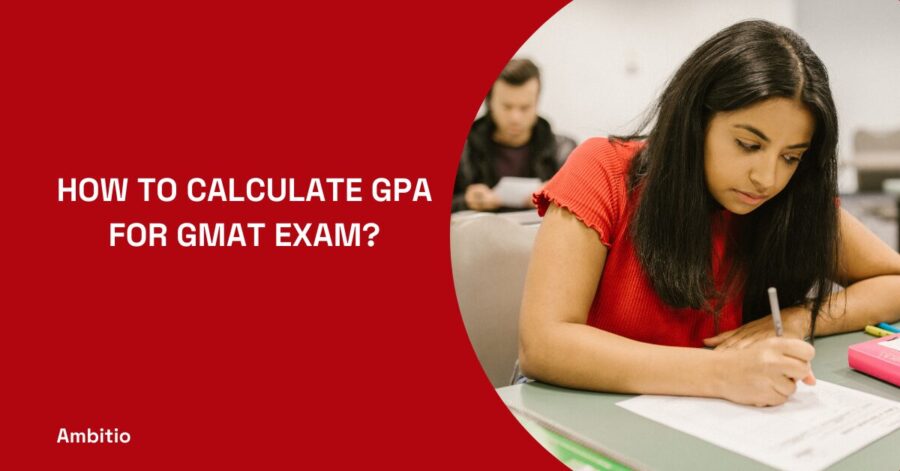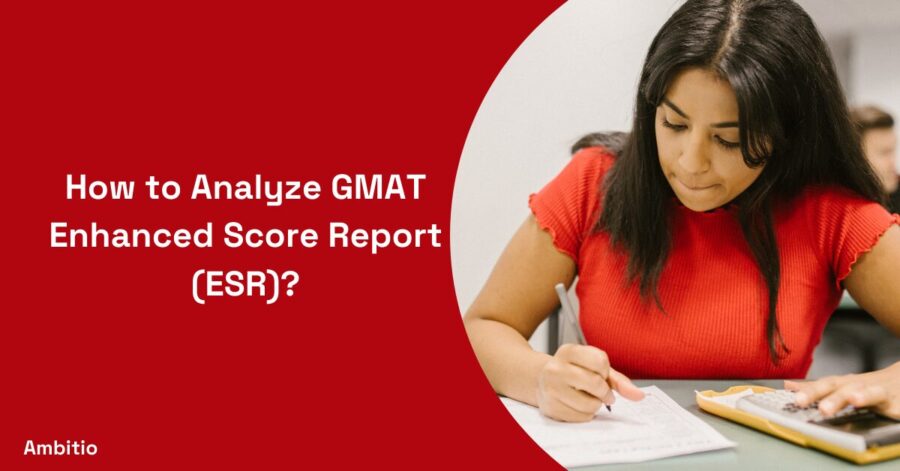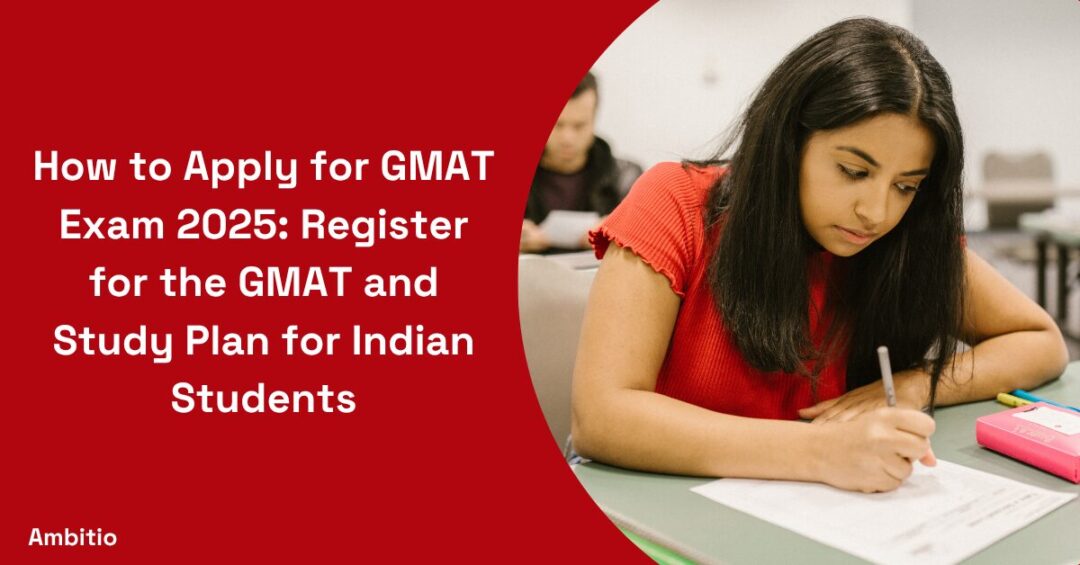17 December 2024
9 minutes read
GMAT Probability Cheat Sheet

Key Takeaways
- Grasp the fundamental probability formula and its application to GMAT questions.
- Know how to handle independent, dependent, mutually exclusive, and non-mutually exclusive events.
- Familiarize yourself with essential GMAT probability formulas like combinations and conditional probability.
- Consistent practice with sample questions will boost your confidence and proficiency in GMAT probability.
Preparing for the GMAT adaptive test can be challenging, particularly when it comes to mastering probability. This GMAT Probability Cheat Sheet aims to clarify the essential concepts and formulas necessary for effectively addressing probability questions. By following this guide, you will gain a comprehensive understanding of how to approach and solve probability problems on the GMAT.
Understanding GMAT Probability
Probability is a key topic tested on the GMAT quantitative question section. It deals with measuring the likelihood or chance of an event occurring. Understanding probability concepts and formulas is crucial for solving GMAT probability questions effectively.
Probability Formula
The fundamental probability formula is:
P(A) = Number of favourable outcomes / Total number of possible outcomes.
This formula gives the probability of event A occurring. The numerator is the count of outcomes where the event occurs, and the denominator is the total count of all possible outcomes.
Types of Probability Questions on GMAT

The GMAT quantitative section often tests probability concepts through a variety of question types. Here are some of the common types of probability questions you may encounter:
Simple Probability
The basic probability formula is: P(A) = Number of favourable outcomes / Total number of possible outcomes.
This formula gives the probability of event A occurring. The numerator is the count of outcomes where the event occurs, and the denominator is the total count of all possible outcomes.
Example:
What is the probability of rolling a 3 on a 6-sided die?
In this case, the event A is rolling a 3 on the die.
The number of favourable outcomes (rolling a 3) is 1.
The total number of possible outcomes (rolling 1, 2, 3, 4, 5, or 6) is 6.
Plugging these values into the probability formula: P(rolling a 3) = 1 / 6
Therefore, the probability of rolling a 3 on a 6-sided die is 1/6 or approximately 0.167 or 16.7%.
Compound Probability
Compound probability refers to the probability of two or more events occurring together. This is used when the problem statement asks for the likelihood of the occurrence of more than one outcome.
The formula for compound probability is: P(A and B) = P(A) * P(B)
Where P(A and B) is the probability of both events A and B occurring.
This formula applies when the events A and B are independent, meaning the occurrence of one event does not affect the probability of the other event.
Example: A jar contains 4 red balls and 6 blue balls. What is the probability of randomly selecting a red ball and then a blue ball, without replacement?
To solve this:
- There are 10 balls total in the jar (4 red, 6 blue)
- The probability of selecting a red ball on the first draw is 4/10 = 2/5
- After selecting the red ball, there are now 9 balls remaining (3 red, 6 blue)
- The probability of selecting a blue ball on the second draw is 6/9
Using the compound probability formula: P(red and blue) = P(red) * P(blue)
= 2/5 * 6/9
= 12/45
= 4/15
Therefore, the probability of randomly selecting a red ball and then a blue ball, without replacement, is 4/15.
Mutually Exclusive Events
Mutually exclusive events are events that cannot occur simultaneously. In other words, if one event occurs, the other event cannot occur at the same time. The key properties of mutually exclusive events are:
- The probability of both events occurring is zero: P(A and B) = 0
- The probability of either event occurring is the sum of their individual probabilities: P(A or B) = P(A) + P(B)
Example:
If a coin is flipped, the outcomes of getting a head (H) or a tail (T) are mutually exclusive. If the coin lands on heads, it cannot land on tails at the same time, and vice versa. Let’s calculate the probability of getting a head or a tail on a single coin flip:
- There are 2 possible outcomes: head (H) or tail (T)
- The probability of getting a head is P(H) = 1/2 = 0.5
- The probability of getting a tail is P(T) = 1/2 = 0.5
Using the addition rule for mutually exclusive events: P(H or T) = P(H) + P(T)
= 1/2 + 1/2
= 1
The probability of getting either a head or a tail is 1, which makes sense since one of the two outcomes must occur.
Non-Mutually Exclusive Events
Non-mutually exclusive events are events that can occur simultaneously or have some overlap in their outcomes. In other words, the occurrence of one event does not preclude the occurrence of the other event. The key properties of non-mutually exclusive events are:
- The probability of both events occurring is greater than zero: P(A and B) > 0
- The probability of either event occurring is the sum of their individual probabilities minus the probability of both occurring: P(A or B) = P(A) + P(B) – P(A and B)
Example:
Consider a group of 30 students in a math class, where 17 are boys and 13 are girls. Suppose 4 boys and 5 girls received an A grade on a test. The events we are interested in are:
- Event A: Selecting a girl from the class
- Event B: Selecting a student who received an A grade
These events are non-mutually exclusive because:
- There are 5 girls who received an A grade
- These 5 girls are part of both the “girl” group and the “A grade” group
Using the formula for non-mutually exclusive events: P(girl or A grade) = P(girl) + P(A grade) – P(girl and A grade)
= 13/30 + 9/30 – 5/30
= 17/30
The probability of selecting a girl or a student who received an A grade is 17/30.
Combinatorics and Probability

Some GMAT math probability questions involve combinatorics, which is the branch of mathematics that deals with counting.
The binomial coefficient formula nCk = n! / (k! * (n-k)!) is often used. These questions may ask you to calculate the number of ways to select items from a set, and then use that to find the probability.
Example : A group of 8 friends (4 men and 4 women) are going on a trip. They need to choose 2 people to drive the car. What is the probability that at least one of the drivers is a woman?
To solve this:
- First, we need to calculate the total number of possible ways to choose 2 drivers from the group of 8 people.
- This is a combination problem, where order does not matter.
- The formula for combinations is: nCr = n! / (r! * (n-r)!)
- In this case, n = 8 (total number of people) and r = 2 (number of people chosen)
- So the total number of possible driver combinations is: 8C2 = 8! / (2! * 6!) = 28
- Now we need to calculate the number of favourable outcomes – the number of ways to choose at least one woman driver.
- This can happen in 3 ways:
- 2 women are chosen as drivers
- 1 woman and 1 man are chosen as drivers
- The number of ways to choose 2 women out of 4 is 4C2 = 4! / (2! * 2!) = 6
- The number of ways to choose 1 woman and 1 man out of 4 women and 4 men is 4C1 * 4C1 = 4 * 4 = 16
- So the total number of favourable outcomes is 6 + 16 = 22
- This can happen in 3 ways:
- Finally, we calculate the probability:
- Probability = Number of favourable outcomes / Total number of possible outcomes
- Probability = 22 / 28 = 11/14
Therefore, the probability that at least one of the drivers is a woman is 11/14.
Conditional Probability
Conditional probability GMAT questions ask you to find the probability of an event occurring given that another event has already occurred.
The formula is: P(A|B) = P(A and B) / P(B)
These questions require you to carefully identify the relationship between the events and apply the conditional probability rule.
Example: In a group of 100 students, 60 are taking a math class and 40 are taking an English class. 20 students are taking both the math and English classes. What is the probability that a randomly selected student is taking the English class, given that the student is already taking the math class?
To solve this:
- Let’s define the events:
- Event A: Student is taking the math class
- Event B: Student is taking the English class
- We want to find P(B|A), the probability of Event B (taking English) given that Event A (taking math) has occurred.
- We can use the formula for conditional probability:
P(B|A) = P(A and B) / P(A) - From the information given:
- P(A) = 60/100 = 0.6 (probability of taking math)
- P(A and B) = 20/100 = 0.2 (probability of taking both math and English)
- Plugging these values into the formula:
P(B|A) = P(A and B) / P(A)
P(B|A) = 0.2 / 0.6 = 1/3
Therefore, the probability that a randomly selected student is taking the English class, given that the student is already taking the math class, is 1/3.
GMAT Probability Practice Questions
Here are a few GMAT probability practice problems with explanations. Practice as many sample questions as possible to understand how to score a 750 on the GMAT.
Problem 1 : A jar contains 4 red balls and 6 blue balls. If two balls are drawn from the jar without replacement, what is the probability that both balls drawn are red?
Solution:
Let’s break this down step-by-step:
- There are 10 total balls in the jar (4 red, 6 blue)
- The probability of drawing a red ball on the first draw is 4/10 = 2/5
- After drawing the first red ball, there are now 9 balls remaining (3 red, 6 blue)
- The probability of drawing a red ball on the second draw is 3/9
- Using the multiplication rule for dependent events:
P(red on 1st and 2nd draw) = P(red on 1st draw) * P(red on 2nd draw)
= 2/5 * 3/9
= 6/45
= 2/15
Therefore, the probability of drawing two red balls from the jar without replacement is 2/15.
Problem 2: In a group of 100 students, 60 are taking a math class and 40 are taking an English class. If 20 students are taking both classes, what is the probability that a randomly selected student is taking the English class given that the student is already taking the math class?
Solution:
Let’s define the events:
A = Student is taking the math class
B = Student is taking the English class
We want to find P(B|A), the probability of B given A.
We can use the formula for conditional probability:
P(B|A) = P(A and B) / P(A)
Given:
P(A) = 60/100 = 0.6 (probability of taking math)
P(A and B) = 20/100 = 0.2 (probability of taking both math and English)
Plugging into the formula:
P(B|A) = P(A and B) / P(A)
= 0.2 / 0.6
= 1/3
Therefore, the probability that a randomly selected student is taking the English class, given they are already taking the math class, is 1/3.
Tips to solve GMAT probability questions
The key is to practice GMAT probability questions regularly, master the core concepts, and develop an intuitive understanding of probability. With enough practice, you’ll be well on your way to acing the GMAT quantitative section. Understand the importance of GMAT test and follow the below tips to solve the GMAT probability section.
- Understand Basic Probability Rule: Know that the probability of an event is calculated by dividing the number of favourable outcomes by the total number of possible outcomes. For independent events, the probability of two events both happening is the product of their individual probabilities.
- Use GMAT Math Formulas: Familiarize yourself with GMAT quantitative topics and essential math formulas, including those for combinatorics and probability. Practice using the combination formula for problems involving selections.
- Apply Probability Rules: Learn the rules you need to know, such as the addition rule for mutually exclusive events and conditional probability for dependent events.
- Practice with Sample Questions: Utilize GMAT books and prep resources like the GMAT Club and the TTP GMAT Blog for practice questions.
- Create a Probability Cheat Sheet: A GMAT math cheat sheet with key probability formulas and concepts can be a handy reference during your study sessions. Include common problems, such as calculating the probability of picking a specific item from a set or the probability that either event A or B occurs.
- Review and Reflect: After completing practice questions, review your answers to understand your mistakes. Use GMAT math sample questions to identify areas where you need improvement.
- Test Day Preparation: Develop a study plan that includes full-length practice tests and targeted review of probability problems. Approach the GMAT with confidence, knowing you have a strong grasp of the probability concepts tested on the GMAT.
- Solve Sample Questions: Regularly solve sample probability GMAT questions to build confidence and proficiency.
By following these tips and regularly practicing, you’ll ultimately know how to ace the GMAT quantitative section.
Important Formulas for GMAT
Here are the key probability formulas you need to know to crack the GMAT exam.
Basic Probability Formula : P(A) = Number of favourable outcomes / Total number of possible outcomes
Multiplication Rule : P(A and B) = P(A) * P(B|A)
Addition Rule : P(A or B) = P(A) + P(B)
Conditional Probability : P(A|B) = P(A and B) / P(B)
Combinatorics : nCr = n! / (r! * (n-r)!)
Conclusion
Mastering probability for the GMAT requires understanding the fundamental concepts and practicing regularly. Use this cheat sheet to familiarize yourself with key formulas and strategies. With consistent practice, you’ll be able to approach probability questions with confidence and improve your GMAT percentile.
Navigate your path to GMAT success with Ambitio’s precision prep for ambitious candidates. Our detailed analytics, personalized feedback, and comprehensive study materials are tailored to help you excel in the quantitative, verbal, and analytical writing sections, setting you up for MBA admission success.
FAQs
What is the difference between independent and dependent events in probability?
Independent events have no impact on each other’s outcomes (e.g., flipping a coin and rolling a die). Dependent events influence each other’s outcomes (e.g., drawing cards from a deck without replacement).
Are there any common pitfalls to avoid in GMAT probability questions?
Common pitfalls include confusing independent and dependent events, misinterpreting the problem’s wording, neglecting to consider all possible outcomes, and failing to simplify fractions correctly. Always double-check your understanding and calculations.
How do you calculate the probability of independent events?
The probability of independent events is calculated by multiplying their individual probabilities. For example, if the probability of event A is 0.3 and the probability of event B is 0.5, the probability of both A and B occurring is 0.3 * 0.5 = 0.15.
How do you calculate probability using combinatorics?
Combinatorics can be used to calculate probabilities by determining the number of favorable outcomes and total possible outcomes. For example, if you want to calculate the probability of getting a certain combination of events, you can use permutations or combinations to count the number of ways to get that combination.
What is the basic probability formula?
The basic probability formula is: Probability of an event = (number of favourable outcomes) / (total number of possible outcomes)
How do you calculate the probability of dependent events?
The probability of dependent events is calculated by multiplying the probability of the first event by the conditional probability of the second event given the first event has occurred. For example, if the probability of event A is 0.4 and the probability of event B given A has occurred is 0.6, the probability of both A and B occurring is 0.4 * 0.6 = 0.24.

You can study at top universities worldwide!
Get expert tips and tricks to get into top universities with a free expert session.
Book Your Free 30-Minute Session Now! Book a call now




























